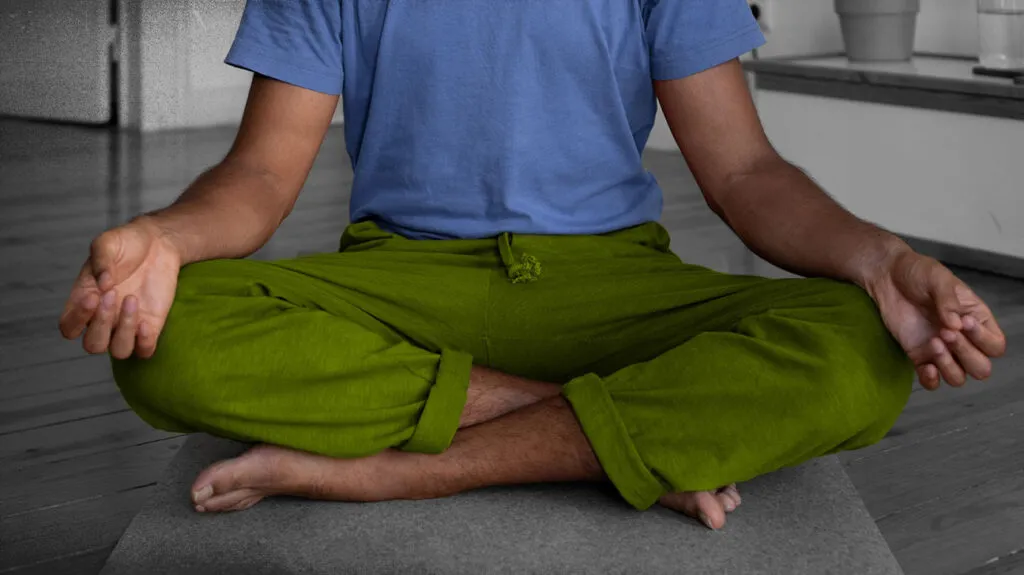ISLAMABAD, July 20(ABC): Millions of people experience chronic pain, which can often be disruptive to everyday life. According to data from the National Health Interview SurveyTrusted Source, chronic pain — defined as pain that is felt “most days” or “every day” — affects 20.4% (1 in 5) of the adult population in the United States. “Chronic pain is complicated,” said Fadel Zeidan, PhD, associate professor of anesthesiology at UC San Diego School of Medicine, in a TEDx talk he gave at the 2019 Napa Pain Conference.
“It’s constructed and modulated by a constellation of interactions between sensory, cognitive and emotional factors, rendering the treatment of pain difficult and often a financial burden.” Currently, there is no cure for chronic pain, but it is often manageable with over-the-counter nonsteroidal anti-inflammatory drugs (NSAIDs), aspirin, acetaminophen, and in more severe cases, short-term prescribed opioids.
And emerging research shows there are alternatives for alleviating chronic pain, such as practicing mindfulness. Mindfulness meditation, which is practiced by encouraging the detached observation of sensory events, could improve the quality of life for individuals living with chronic pain.
Several recent studies have demonstrated the efficacy of mindfulness meditation in managing chronic pain, such as chronic low back painTrusted Source and migraineTrusted Source. In a new study published in the journal PAIN, Dr. Zeidan and colleagues explored the mechanisms underlying mindfulness meditation-induced pain relief. The clinical trial The study led by Dr. Zeidan involved 40 healthy and pain-free individuals.
In the first study session, the researchers tested the baseline pain levels of the participants by applying a painful heat stimulus to each participant’s right calf and asking them to rate the intensity and unpleasantness of the pain using a visual analog scale: 0 meant no pain and 10 meant then most intense pain imaginable. The researchers then randomly divided the participants into two treatment groups.
One group was trained to focus on the changing sensations of their breathing without judging themselves or the experience. This training was spread over four, 20-minute sessions. Members of the other group (the control) spent the same time listening to an audiobook. When participants returned to the lab, they underwent a functional magnetic resonance imaging (fMRI) scan, to measure brain activity.
While the participants rested, the researchers applied a painful heat stimulus to their right calf. Members of the mindfulness group were instructed to meditate until the end of the study, while the control group were instructed to keep their eyes closed. The researchers applied the painful heat stimulus once again and asked the participants to rate the pain intensity and unpleasantness.
Pain reduction through multiple brain pathways The researchers found that mindfulness meditation reduced heat-induced pain by 33% when compared to the rest phase (before the start of meditation). Meanwhile, the control group reported an 18% increase in pain from the beginning to the end of the brain scan. When the researchers compared the fMRI scans of the participants practicing mindfulness meditation to those of the participants at rest and in the control group, they saw that mindfulness meditation significantly reduced pain processing in several brain regions.
They found that meditation-induced pain relief was associated with the deactivation of the ventromedial prefrontal cortex (vmPFC). The vmPFC is a node in the brain that regulates the self-narrative processing of moment-to-moment experience. Pain processing and self-reflection: What’s the link? Through further analysis of the brain scans, the researchers found that meditation-induced pain relief was also associated with decoupling between the thalamusTrusted Source and the precuneus.
The thalamus is the part of the brain that relays sensory impulses, including pain, from receptors in various parts of the body to the rest of the brain. The precuneus is part of the default mode network, a set of brain regions that are thought to be activated when individuals are engaged in self-reflection. Previous studies have shown that a strong link between the thalamus and the precuneus drives the symptoms of chronic pain. Dr. Zeidan and coworkers believe that mindfulness-based pain therapy provides pain relief by “unlinking” the pain-processing thalamus from the self-reflecting precuneus.
This neurobiological theory is consistent with the central tenet of mindfulness, which is to experience thoughts and sensations without attaching your ego or sense of self to them in order to alleviate emotional pain or discomfort. “The mind-body connection really represents our ability to control our physiology consciously. We can regulate our heart rate, blood pressure, and breathing, for example in this way,” said Robert W. Gereau, PhD, a Dr. Seymour and Rose T. Brown professor of anesthesiology at Washington University School of Medicine in St. Louis. “Mindfulness meditation is one way to change the way stimuli are perceived and can provide improvements in stress, anxiety, sleep, and pain.
This is not something that we have really understood mechanistically, and this study shows brain circuitry that appears to be engaged during mindfulness meditation as it relates to pain reduction.” – Robert W. Gereau, PhD Mindfulness meditation to manage chronic pain Traditionally, pain management options for individuals with chronic pain were limited to the use of opioids.
Now, there is a growing body of evidence to suggest that mindfulness meditation can be used to manage chronic pain. Dr. Zeidan said that an “integrative approach” to chronic pain management is required. “There is no cure for chronic pain nor is there one silver bullet therapy,” Dr. Zeidan said. “Since [mindfulness] does not use the body’s opioid system to reduce pain, it can be used as adjunctive therapy with more traditional treatments.”

